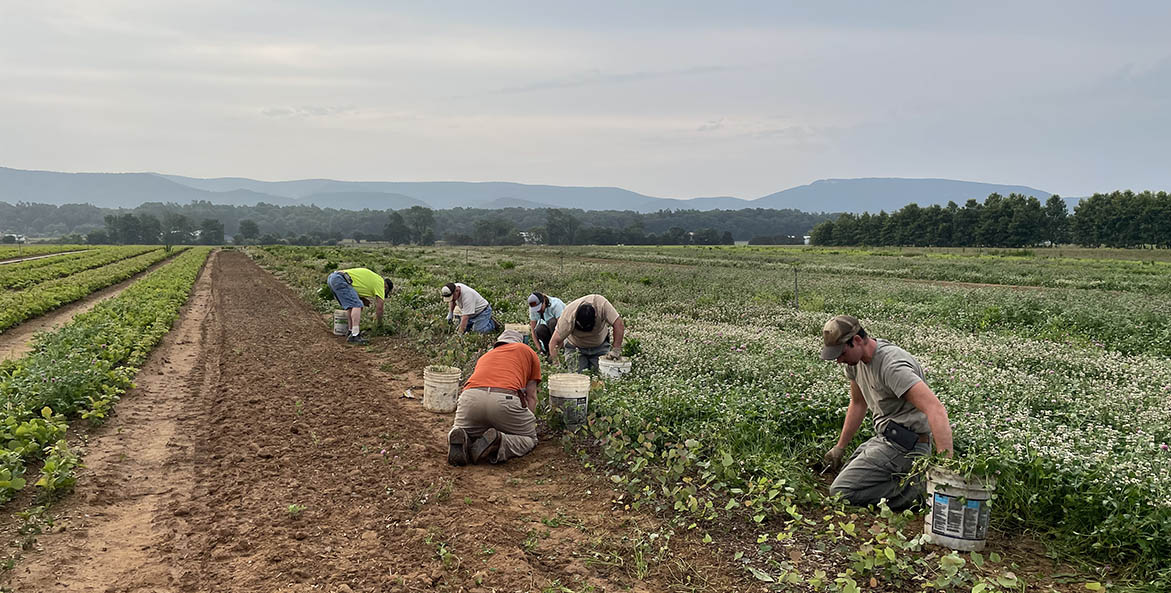The following was first published in the James River Association blog.
The James River Buffer Program will require hundreds of thousands of tree seedlings to meet established goals for improving water quality and soil health. However, the Commonwealth's current capacity to supply hardwood seedlings does not match the growing demand.
The Augusta Forestry Center, a Virginia Department of Forestry nursery in Crimora, supplies most of Virginia's seedlings. The self-supported nursery has served the tree planting needs of the Commonwealth for over a century, but it is currently short-staffed, an issue that has worsened since the Covid-19 pandemic. To meet the increased demand for hardwoods like oaks, maples, and hickories, they need more support (especially in the form of hands-on labor). So, we decided to lend a hand.
The Chesapeake Bay Foundation (CBF) hosted two volunteer events this summer. CBF staff, partners, and volunteers worked alongside nursery staff to assist with the simple—yet critical—task of weeding in the seedling beds. While weeding isn't quite as glamorous as a tree planting, it's equally important. If seedlings aren't healthy when they're planted, they won't have a great chance at success in a riparian buffer or elsewhere, which can be disheartening for landowners and conservation professionals alike.
Among basic inputs like water, light, and nutrients/fertilizers, young trees must be free of unnecessary competition from other plants to thrive. And while there are certain situations for which herbicides can be used, the majority of weed removal must be completed by hand to prevent damage to seedlings. Though it can be tough work to remove weeds manually, there's no better way to start the day than by working in the shadow of the magnificent Blue Ridge Mountains with our hands in the soil.
"I just want people to know that we exist, we are here, and we have high-quality product," says Nursery Manager Joshua McLaughlin. Starting October 1, 2021, you can place an order for the next planting season with the Augusta Forestry Center. McLaughlin also asks for help collecting acorns and nuts this fall. Locally sourced seeds have better chances of long-term survival, since they are adapted to local environmental conditions. In September, VDOF will announce the details for this year's acorn/nut drive.
Meeting Virginia's goal of 70,000 acres of new riparian buffer within the James River watershed by 2025 requires the collaboration of several partners. The James River Association (JRA) convenes the Upper & Middle James Riparian Consortium that supports this wide network of partners that acquire and provide funding and technical assistance for landowners such as the Natural Resources Conservation Service, local Soil and Water conservation Districts, and non-profits such as JRA and CBF, as well as contractors who prepare sites for tree planting and install and maintain buffers. Those who source the plant material, our nurseries, are also crucial to this collaboration. Thus, our partnership with the Virginia Department of Forestry and their Augusta Forestry Center is critical for the health of the James and Chesapeake Bay watersheds.
If interested in learning more about the Augusta Forestry Center, volunteer opportunities, or other ways you can get involved, email Joshua McLaughlin.



